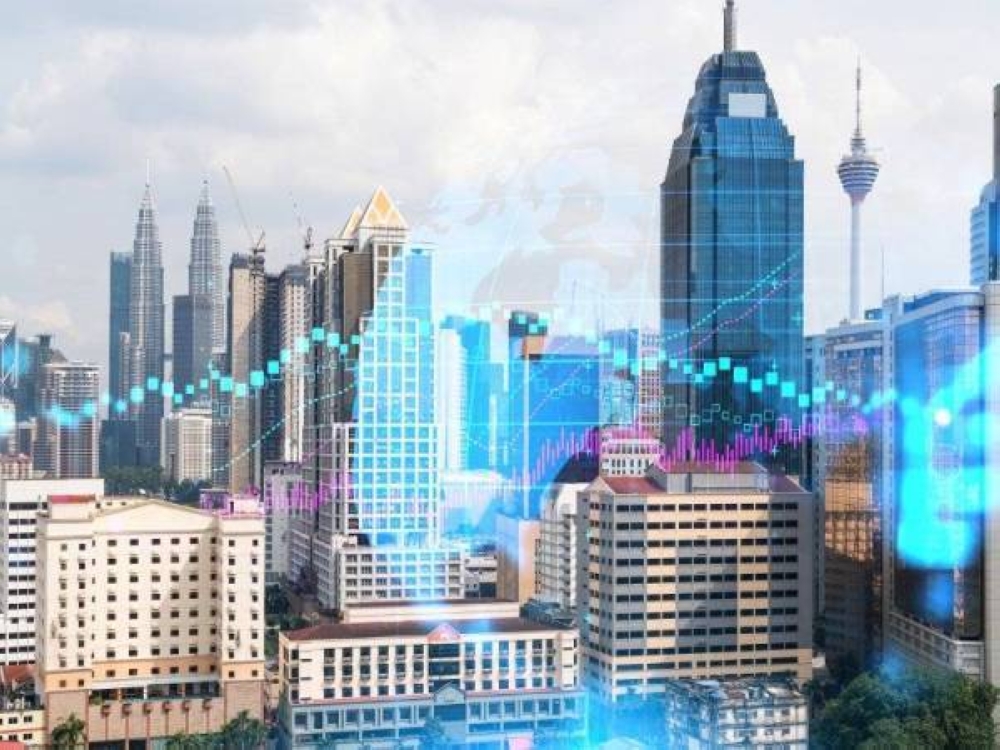The Silicon Valley Bank Collapse: An Explainer

SHAH ALAM - According to the Center for Market Education, the Silicon Valley Bank collapse and the consequent bank crisis can be explained as the result of rapid monetary manipulations, which brought the world economy to experience – very rapidly – an alternance between inflation and credit crunches.
Such a scenario, was anticipated by the Center for Market Education in 2021 and it can be summarised due to lockdowns, fiscal and monetary expansions, inflation, inflation-fueled recovery, credit crunch (higher interest rates), post-Covid inflation-led economic crisis.
The scenario can be described in detail as it follows:
Entrepreneurs see opportunities for profit and take advantage of them. After the first wave of new investments, others follow on the wave of enthusiasm.
As Nobel Laureate Friedrich A. von Hayek explained in 1933, "In general it is probably true to say that most investments are made in the expectation that the supply of capital will for some time continue at the present level.
Or, in other words, entrepreneurs regard the present supply of capital and the present rate of interest as a symptom that approximately the same situation will continue to exist for some time".
The entrepreneurial impetus towards new investments initially involves an increase in raw material prices and, consequently, of the intermediate goods produced with them.
And the impetus becomes particularly violent when the wave of the first innovative entrepreneurs is joined by the pressure of imitators described by Schumpeter, who grasp profit opportunities only in a second stage and attempt to benefit by following the ‘fashion’ of the moment.
At the same time, demand for labour increases, bringing along higher wages: this in turn encourages demand for consumer goods, with their prices thus increasing (inflation).
Hayek explains again, "This increased intensity of the demand for consumers’ goods need have no unfavourable effect on investment activity so long as the funds available for investment purposes are sufficiently increased by further credit expansion to claim, in the face of the increasing competition from the consumers’ goods industries, such increasing
shares of the total available resources as are required to complete the new processes already under way".
However, in order to be sustained, this process requires credit expansion without respite – which would bring about a cumulative increase in prices that sooner or later would exceed sustainability.
The conflict seems to be evident when demand for consumer goods exceeds the funds available for investment in terms of absolute value. At this point, the interest rate cannot but rise, frustrating demand for capital goods precisely when their price has also risen.
A considerable part of the new investments remains unfinished since the further investments required to complete production processes cannot be made.
As a result, in an advanced stage of the boom, growth in demand for consumer goods brings down demand for capital investments.
The entrepreneurs who have begun to increase their long-term investments in the expectation that the low rate of interest and the ample supply of money capital would enable them to continue and to utilize these investments under the same favourable conditions, find these expectations disappointed.
The situation is made worse in a world characterized by financial innovations. Hyman Minsky explained that during periods of tranquil expansion, profit-seeking institutions invent and reinvent “new” forms of money, substitutes for money in portfolios, and financing techniques for various types of activity: financial innovation is a characteristic of our economy in good times.
However, available new money will introduce additional demand for capital and financial assets, or for more investment, and this results in higher asset prices, which in turn raises the demand price for current investment. In a nutshell, financial innovation «tends to induce capital gains, increase investment, and increase profits: the economy will try to expand beyond any tranquil full-employment state.
During the boom following a tranquility period, thus, innovative debt practices and speculative excesses are encouraged and an unrecognised system fragility evolved.
In such a scenario, in which inflation is accompanied by the instability of financial innovations, the necessary (but maybe too rapid) rise in the rate of interest, brought about to fight inflation, will decrease the demand for capital investments.
Capital becomes scarce and resources are diverted toward the production of consumption goods, which – because inflation – is now more attractive.
A period of adjustment, called crisis, emerges. The system seeks away to recover from a period of forced drunkenness.
Conclusion:
The collapse of Silicon Valley Bank, therefore, needs to be seen as a consequence of the industrial difficulties faced by the tech industry in the last few years.
Such difficulties can be described with the creative destruction tool and its business-cycle inducing process (innovations followed by speculative imitations), but such a process would not had happened without the excess liquidity created as a consequence of the lockdowns. The turning point of the cycle was determined by inflation and the need to fight it.
The Center for Market Education (CME) is an academic think-tank based in Kuala Lumpur and Jakarta, Indonesia. The views expressed in this article are the author's own and do not necessarily reflect those of Sinar Daily.














